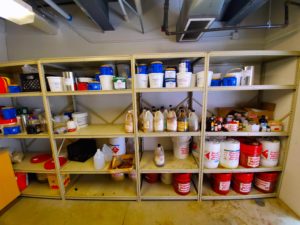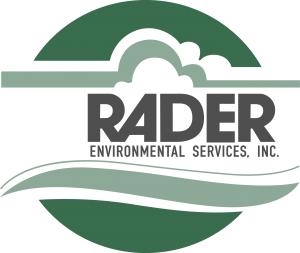A “lab pack” is an accumulation of unwanted or obsolete chemicals that range in size from less than 2 ml to 5 gallons and placed in approved containers by the Department of Transportation (DOT) for safe shipping. An absorbent material, such as vermiculite, must be placed around the contents in each container. These containers vary in size from 5 gallons to 55-gallon drums.
Two primary federal agencies–the DOT and Environmental Protection Agency (EPA)–oversee transportation, shipping, and disposal of unwanted or obsolete chemicals. Sometimes these chemicals are considered to be hazardous waste, while other times they can be non-hazardous.
Lab packing is a very effective way for companies, schools, colleges, and universities to remove unwanted or obsolete chemicals.

How to Create a Lab Pack
First, a chemist begins the lab pack disposal process by identifying, categorizing, and segregating each chemical based on DOT and EPA requirements, chemical characteristics and disposal facility guidelines. Each disposal company has its own unique requirements for shipping and handling chemical waste, so be sure you’re following their guidelines as well.
Some companies, schools or universities may have significant amounts of unwanted chemicals on site. But they can’t all be packed in a FedEx box and shipped together. Mixing non-compatible chemicals into a lab pack container can impact the health and safety of anyone who comes into contact with the container. In fact, combining chemicals that react with one another could have deadly consequences.

The Waste Stream Combinations Number in the Thousands
Before being shipped offsite, a chemist should separate each chemical, according to DOT regulations. The chemicals need to be organized based on their 1) hazard class, packing group, and 3) proper shipping name.
For instance, most flammable liquids can be packed into one container, while oxidizers must be packed in a separate lab pack. There are more types of waste streams than just flammable liquids and oxidizers, however. The DOT has nine shipping classes (placards pictured below), but there are over 2,500 hazardous materials that can be transported for disposal!

A chemist or hazmat expert must have knowledge of each of the chemical’s constituents in order to properly assemble a lab pack that complies with DOT regulations, EPA requirements and disposal company guidelines.
Separating Chemicals into Lab Packs Can Be Tedious
Creating a compliant lab pack isn’t an easy process: It can often be complex. After each chemical is separated into packs based on their hazard level, toxicity, DOT requirements, EPA requirements, and disposal facility requirements, a hazardous materials expert begins packing the substances into DOT-conforming containers for that particular hazard class. These can include cardboard, metal or poly containers. Then, the lab pack expert carefully places each chemical into the container, surrounded by an ample amount of absorbent.

How to Properly Dispose of Lab-Packed Chemicals
Now it’s time to dispose of these lab packs. Each one of the containers must be labeled with specific information required by DOT, the EPA, and the disposal facility; manifested, and transported by a licensed hazardous waste transporter.
Once the disposal facility receives the lab packs, they properly manage the destruction of the chemicals within the containers. Some of these substances can be recycled for fuel blending, while others are neutralized, incinerated, landfilled or treated.
As often as possible, Rader aims to facilitate the recycling of these substances for re-use into other chemicals or products.




